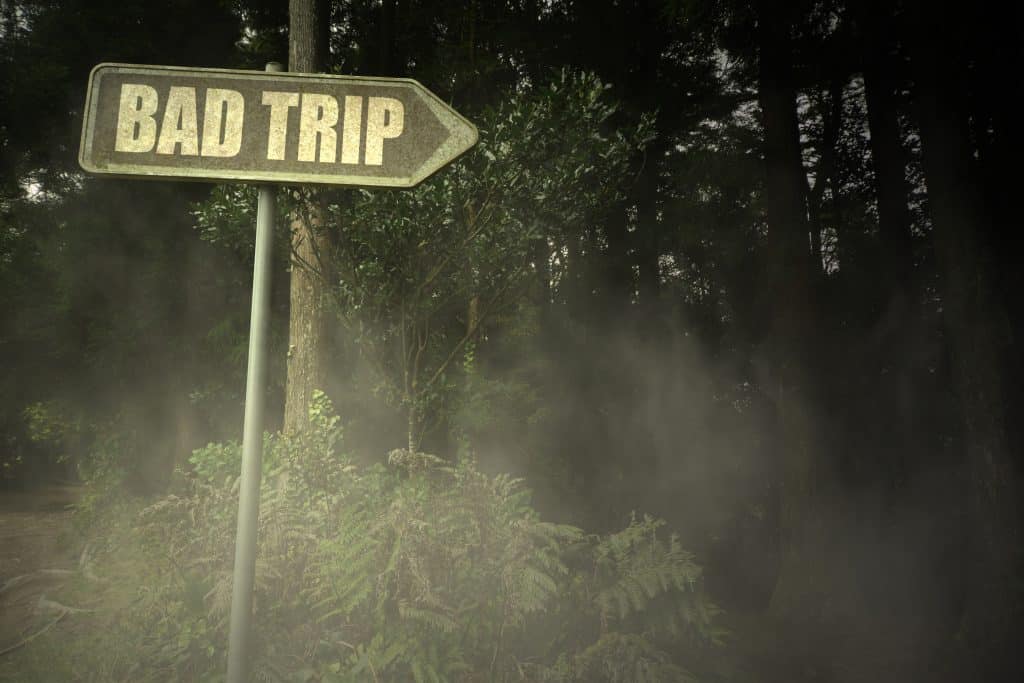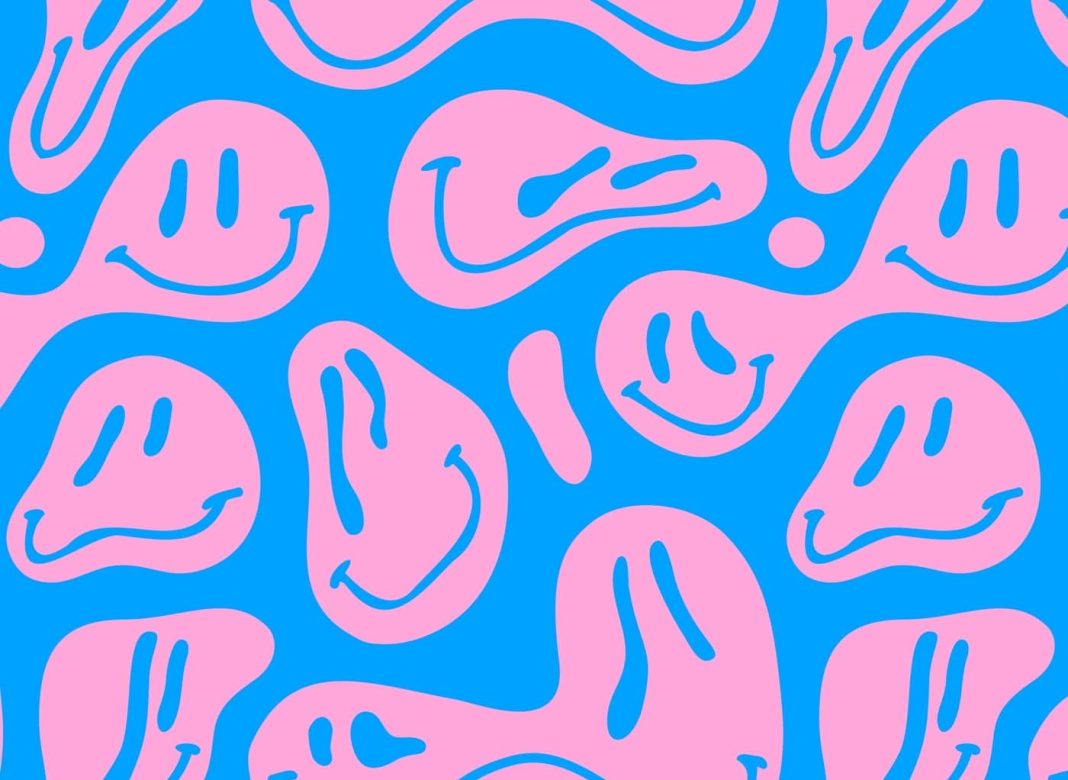New studies indicate that a practice called “candyflipping” can help reduce bad trips, which are negative experienced caused by psychedelic use. A bad trip can hinder therapeutic and spiritual benefits, and can even be terrifying enough that a person never want to use hallucinogenic drugs again – so finding ways to minimize the risk of them happening is of utmost importance. So let’s take a closer look at how candyflipping works.
Candyflipping explained
Despite how casual it may sound, candyflipping is not just a slang term. The formal definition is “the combined administration of MDMA and LSD among recreational users, reportedly inducing synergistic acute positive mood effects,” and it’s a practice that is now being officially studied by the Liechti Lab at the University of Basel in Switzerland, one of the top psychedelic research centers in the world. The rights to all research conducted at the Liechti Lab is owned by MindMed.
Although candyflipping has been discussed in the psychonaut world, this is the first controlled study to look closer at the combination of MDMA with LSD in a clinical setting. The study was published a few months ago in the journal Nature. According to the study authors, the hypothesis was that “the co-administration of MDMA and LSD results in higher acute ‘good drug effects,’ well-being, openness, and trust and lower ‘bad drug effects’ and anxiety compared with LSD administration alone.”
During the double-blind, placebo-controlled study, 100mg of MDMA was paired with 100µg of LSD and given to twenty-four healthy participants (12 men and 12 women between the ages of 25 and 54 years). Despite how much promise researchers were expecting, they were surprised to find that the co administration of MDMA with LSD produced no significant differences compared to taking LSD alone.
So, why the discrepancy? How come users have been reporting benefits when combining MDMA with other psychedelics for years, but the study found no notable differences? Well, the answer comes down to dosage. The study only investigated 100µg of LSD, which is a relatively low dose. Many people start with 200µg or more to really get the intense kind of trip that produces hallucinations. Low doses of LSD will produce milder trips than higher doses, so it’s possible that if the study used more LSD, the positive effects of the MDMA would have been more evident.
Researchers noted: “We only tested single dose levels of both LSD and MDMA and co-administration at the same time. LSD at a dose of 100 µg mainly induces high acute positive effects and nominally less anxiety compared with a higher dose of 200 µg. Thus, we cannot exclude the possibility that MDMA may reduce negative mood effects, including anxiety, of higher LSD doses than the dose that was used in the present study.”
Looks like we can expect to see a follow up study in the future. And it’s worth reiterating that not only does MindMed own the rights to all this research, but they have already obtained a patent to create products that combine LSD and MDMA. I have also seen gummies and capsules that combine psilocybin with MDMA, sold on the black market of course, but they’re great products and it would be interesting to see the two paired in a future research project as well.
A bit more about MDMA
MDMA (3,4 methylenedioxymethamphetamine) is known informally as molly or ecstasy, although the former is used to denote pure MDMA, whereas ecstasy is usually cut with other drugs. MDMA appears in crystalline form or powder, which is the purest form of this drug, and ecstasy is the pressed powder tablet version. But to press the powder into a pill, it needs to be mixed with other ingredients, which can also lower production costs and are often harmful to the consumer.
Like other hallucinogens, MDMA works primarily via interaction with serotonin receptors, although the effects are quite different from other psychedelics like mushrooms and acid. Hallucinations are not typical with MDMA. In my experience, it gave me energy, made me feel really happy and connected, adventurous, it always made my social anxiety melt away, and there’s a sensory aspect to it also, where touching certain things and being touched feels amplified.
It was created back in 1912 by researchers at Merck Pharmaceutical, but it received little attention, and it wasn’t until the 1970s when the effects of this drug became better understood. American chemist Alexander Shulgin took an interest in MDMA and developed a new way to synthesize it. After testing it with a few fellow psychotherapists, it started being used therapeutically, coupled with different types of therapy treatments.
Despite being quite effective, MDMA was banned in 1985, and any further treatments or research came to a halt. It wasn’t until the last few years that interest in psychedelics ramped back up, especially for the treatment of PTSD, and numerous areas around the world are working on loosening restrictions on the drug. Last year, Colorado became the first state to legalize MDMA, and it’s been decriminalized in Oregon since 2021. Earlier this year, Australia legalized MDMA along with a handful of other psychedelics for medical use.
What is a bad trip?
Bad trip experiences are common among users of psychedelics. In a 2021 survey of 50 Norwegian psychedelic users, nearly every single one of them reported having had “frightening experiences” at least once when using hallucinogens. Aside from the often-discussed psychological side effects, physical symptoms of a bad trip can include irregular heartbeat, nausea, chills, sweating, and anxiety.

Although scary, many people find ways to make these experiences positive and transformative. It’s not uncommon for bad trips to be viewed as a type of metaphor for an issue the person needs to address in real life. Like how seeing certain things when you look at your own reflection could be an indication that you need to work on your self-esteem.
Many things can cause bad trips, from obvious things like seeing something that is actually scary and overthinking it, to inconspicuous things like catching a glimpse of yourself in the mirror. It’s important to not only engage in practices that will facilitate a good trip, but to practice the type of self-control needed to remind yourself, if you happen to end up feeling negatively about something, that you’re just high and you need to refocus your thoughts and energy.
Other ways to ensure a positive trip
Most pyschonauts agree that “set and setting” are key to having a happy and therapeutic psychedelic trip. The general consensus is that it is best to avoid unfamiliar situations, especially if you’re a novice user, and you should do everything possible to construct a relaxing and safe tripping environment BEFORE you start your adventure. That includes the environment itself, AND the people that are sharing it with you.
At best, being around bad company or people that make you uncomfortable can be awkward and unpleasant. At worst, hanging out with the wrong people while tripping can become a literal nightmare complete with terrifying hallucinations. I don’t know about you, but for me, vibes are everything. If I get bad vibes from someone when I’m sober, I’ll feel that negativity tenfold if I’m on psychedelic drugs. To make sure you have a peaceful experience, you absolutely must surround yourself with people you trust and feel completely safe around.
Psychedelic drugs are also best used on their own, or with other similar drugs at the very least, like cannabis and mushrooms. Mixing with harder drugs and alcohol can be dangerous as they can magnify disorientation and physical symptoms associated with bad trips (nausea, chills, etc.), and some believe that combining these types of substances with entheogens can lead to violent thoughts and hallucinations.
Also, it’s important to be in a positive headspace before starting your psychedelic journey. If you’re in a bad mood beforehand – feeling anxious, nervous, stressed, scared, or going through some sort of existential crisis – you might want to hold off on the psychedelics. If you’re inexperienced and grappling with dark thoughts, hallucinogens can amplify these and put you in a dangerously negative state of mind.
When planning your trip, it’s important to keep in mind that certain hallucinogens – mushrooms and LSD, for instance – can produce highs that last for up to 8 hours. Make 100 percent sure that you have enough time to complete your psychedelic journey and come down from it properly without any impending activity or responsibility. If you feel like you’re rushing and have too near of a cutoff time before getting back to reality, you could end up with a veil of dread and anxiety over your experience.
Final thoughts
Even though the study didn’t produce the results that researchers were hoping for, people who have experience with these drugs agree that candyflipping can help reduce the risk of experiencing a bad trip, especially in those who are prone to anxiety. The study authors also concluded that at different doses, their experiment may have gone more as expected.
Do you have any experience mixing MDMA with LSD? What about MDMA and other hallucinogens? If so, drop us a line in the comment section and let us know about it. We love to hear the perspectives of our readers!
Hello readers. We’re happy to have you with us at Cannadelics.com; a news source here to bring you the best in independent reporting for the growing cannabis and hallucinogen fields. Join us frequently to stay on top of everything, and subscribe to our Cannadelics Weekly Newsletter, for updates straight to your email. Check out some awesome promos for cannabis buds, smoking devices and equipment like vapes, edibles, cannabinoid compounds, amanita mushroom products, and a whole bunch more. Let’s all get stoned together!





